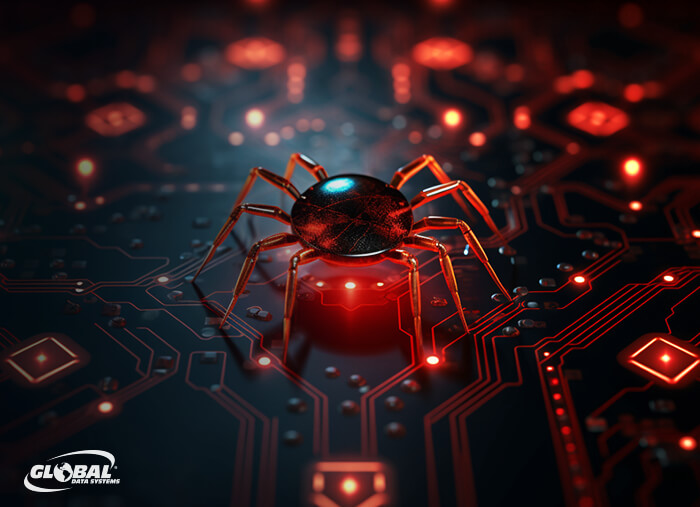9 of the Most Notorious Malware Types
Malicious software, or malware, is a scourge for computer systems everywhere. Analysts say there are more than 1 billion of these programs in the wild, infecting systems, stealing data and money, corrupting files, compromising identities and more.

Different Types of Malware 2023
There are many different types of malware, and all can seriously impact your systems and ultimately your entire business. Here’s a brief look at some of the more notorious variants:
- Viruses replicate and spread from one computer to another by inserting malicious code into legitimate programs or files. They can destabilize systems and corrupt, delete or steal data. In order to spread, viruses require some type of user action, such as opening infected email attachments or downloading malicious files.
- Worms are also designed to spread across computers and systems. Unlike viruses, however, worms can spread without any user interaction. They can exploit vulnerabilities in network services, operating systems or software to self-replicate across the network to uninfected computers.
- Trojans disguise themselves as legitimate software or files to trick users into willingly installing or executing them. They are commonly spread via music files, games, movies or video codecs. Once downloaded, they can create backdoor network access, steal data, redirect Internet traffic or monitor user activity. Remote access trojans (RATs) allow attackers to control an infected computer remotely.
- Ransomware encrypts a victim’s files and demands a ransom payment in exchange for the decryption key. It is primarily spread via phishing emails, compromised remote desktop connections, or software flaws. Once activated, it shuts off system recovery mechanisms and encrypts files on the victim’s system and connected network drives. Newer variants also threaten to publish or sell the victim’s data if the ransom is not paid, adding another layer of extortion.
- Spyware gathers sensitive information about victims without their knowledge. It is typically installed via disguised software downloads, email attachments or malicious websites, although it is sometimes bundled with legitimate software. Once installed, it can track keystrokes, capture screenshots, record browsing habits and collect personal data.
- Fileless malware is designed to defeat traditional signature-based security and forensic tools. It is nearly impossible to detect because it leaves no files or artifacts on infected systems. After an initial infection via phishing email or software vulnerabilities, it resides in the device’s memory where it exploits legitimate scripting frameworks to spread through the network collecting sensitive information. Once the infected computer is rebooted, the malware disappears without a trace.
- Rootkits allow malicious actors to take remote control of a computer with full administrative privileges. Like most others on this list, they are commonly spread via malicious emails, attachments and downloads. They can manipulate hardware, software and hypervisors to evade detection.
- Wiper malware is meant to look like ransomware but doesn’t include any sort of recovery mechanisms. Instead, it is designed to destroy data and make recovery impossible. Although wiper variants may work in slightly different ways, they almost always target a computer’s files, backups and master boot record (MBR). The MBR is a key part of the startup system containing information about the computer’s disk partitions and helps load the operating system.
- Miner malware hijacks computing resources to mine cryptocurrencies. Typically spread via malicious email attachments or compromised websites, miner malware runs in the background, utilizing an infected computer’s CPU to perform complex cryptomining calculations. These processes impair system performance and can cause computers to overheat and damage components.
With hundreds of thousands of new malware variants identified daily, defending your critical computer systems can be an overwhelming task. GDS can help. Our suite of managed security services is designed to detect malware and prevent network intrusions. Contact us to learn more.
Benefits of Managed IT Services from Global Data Systems
- Strategic Managed IT: We help you solve your technology related business problems.
- Connectivity: We get you reliable, secure connectivity anywhere in the western hemisphere in 48 hours.
- Support: When you need help simply call our 24x7x365 support number.
- Billing: Instead of managing hundreds of vendors - get one, easy to read bill from GDS.
Contact Managed Services Provider, Global Data Systems >

